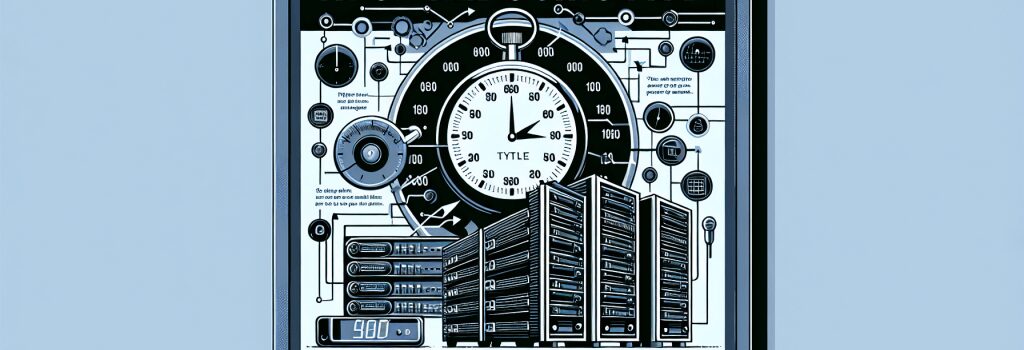Tips for Reducing TTFB (Time to First Byte) on Your Web Server

Alright, let’s dive into the world of web development and make your server faster than Usain Bolt!
Chapter One: Understanding TTFB – Time To First Byte
So what is this mystical TTFB? Is it some secret sauce you should pour over your code like ketchup on fries? TTFB, or Time To First Byte, measures the duration from the user or client making an HTTP request to the first byte of the page being received by the client’s browser. In simpler terms, it’s the time it takes from when you click on a website till you can see the first hint of the page. A small amount of delay can be tolerated, but when your TTFB starts slowing down to the pace of a sloth – you and your audience may have a problem!
Remember one thing, in the world of the web, speed is king. Users are impatient creatures who want instant gratification. Taking too long to load can make them abandon your page and check out the competition.
Chapter Two: Can I Reduce TTFB? Techniques & Strategies
Here are some tips that can make your server as snappy as hares on coffee:
1. Optimize Your Application’s Code
You should always aim for lean, mean, and efficient code. Fat and inefficient code often leads to slow server responses. So, be sure to regularly review and refactor your code.
2. Use a Content Delivery Network, aka CDN
A CDN can dramatically improve load times by storing your website data on servers located around the globe. So, wherever your users may be, they’ll get your data more quickly because it’s being delivered from a local server.
3. Leverage Caching
Caching allows you to store frequently accessed data closer to the user, which significantly reduces load times. It’s kind of like keeping your chocolates in your pocket instead of the fridge.
4. Enable Compression
This trick is akin to using a vacuum bag to compress your old sweaters into a tiny package. By enabling compression in your web server software, you can reduce the size of data transferred between your server and your users.
5. Use a PHP Accelerator
If your server runs on PHP, using an accelerator can significantly cut down your TTFB. This tool caches the compiled bytecode of PHP scripts so the server doesn’t have to constantly re-read and compile the code.
6. Tune your Database
A well-optimized database can drastically improve the performance of your site. Make sure you’re taking regular backups, optimizing and cleaning up your database frequently.
So, there you have it, tips to show your server who’s the boss. When you properly employ these tactics, you’ll find your web server delivering pages faster than a cheetah on roller blades. Now, onto the next chapter where we’ll dive deeper into the wonderful, wild world of web development!


